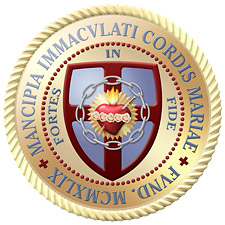

So these cases are not relevant to the dogma, in the sense, that every one needs to be a formal member of the Church ( with faith and baptism) today and there are no known cases of any one saved with the baptism of desire, followed by the baptism of water.
We cannot make a link between the two.
If we make the link we create liberal theology.
So it can only be said that someone can be saved with the baptism of desire, followed by perfect charity and the baptism of water, and every one needs to be a formal member of the Catholic Church with no exceptions, today.
The MICM may mean well, but unknowingly have complicated the issue when they assume that Lumen Gentium 16 ( saved in invincible ignorance) is an exception to the dogma. Instead they could say that LG 16, LG 8, UR 3, NA 2, AG 11( seeds of the Word) etc refer to cases saved with the baptism of water.So they are not explicit exceptions to the rigorist interpretation of the dogma extra ecclesiam nulla salus.
In this way Vatican Council II (AG 7,LG 14) would support the dogma according to Fr.Leonard Feeney and LG 16 etc would not be exceptions.Vatican Council II would not contradict the Syllabus of Errors.So the MICM could announce that they accept Vatican Council II with an ecclesiology which is ecclesiocentric and traditional.
Presently, they affirm the rigorist interpretation of the dogma extra ecclesiam nulla salus and interpret Vatican Council II as a break with the dogma.This is liberalism.
Their position is the same as Cardinal Walter Kaspar who says the Council is ambiguous and a break with Tradition and he accepts the Council.
The MICM has informed the Vatican that they accept Vatican Council II.While they also say that the Council is a break with Tradition and the dogma extra ecclesiam nulla salus.Cardinal Kaspar and the MICM are using the same new theology which comes from Cardinal Francesco Marchetti Selvaggiani's mistake.
They need to identify the mistake, avoid it and re-interpret all magisterial documents without Marchetti's irrational premise and inference.
Cardinal Kaspar accepts Vatican Council II and so the MICM.
He says Vatican Council II is a break with the past and so the MICM.
He does not know that he is using Apparition Theology, Marchetti's theology, which makes Vatican Council II a break with the past,and it seems neither do the MICM.
-Lionel Andrades
Compartmentalise your thinking on the baptism of desire and blood with the dogma http://eucharistandmission.blogspot.it/2015/05/compartmentalise-your-thinking-on.html
Can you look at this issue without the models used by the SSPX and the MICM ?
http://eucharistandmission.blogspot.it/2015/05/can-you-look-at-this-issue-without.html
CM,SSPX,MICM deny the Faith to please superiors
https://www.facebook.com/SistersMICM
http://catholicism.org/category/the-slaves-of-the-immaculate-heart-of-mary




